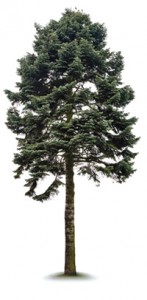Ecology vs. The Changing Climate
A Game of Knowns, Unknowns, and Unknown Unknowns
By Sarah Vig
When it comes to climate change, “we have the knowns, the unknowns, and the unknown unknowns,” said Steve McNulty, an ecologist with the U.S. Forest Service.
According to McNulty, the “knowns” are scenarios scientists can expect to develop with climate change and managers have an established best practice technique.
“It is commonly held that the way to manage a forest faced with drought stress is forest thinning,” said McNulty.
The “unknowns” are factors that scientists expect to be affected by climate change, but don’t know how, such as the behavior of invasive insect species. The “unknown unknowns,” McNulty said, are the “surprises;” by virtue of their obscurity, these clearly have the most potential to seriously impact ecosystems.
Take the case of the southern pine beetle, a tree parasite that lays its eggs under the bark of pines, where the larvae then feed on the tree’s living tissue underneath. Under normal circumstances, the beetle’s hosts are trees made vulnerable by sickness or age.
When the Asheville area was experiencing an extended drought in the late 2000s, the southern pine beetle spread farther north into territory it had not previously inhabited and began attacking spruce trees that grow in the higher elevations.
Contrary to expectations and previous behavior, it was the healthiest spruce stands that suffered the greatest impact. These trees were using the most water, producing the least amount of resin, and therefore less able to keep the beetle from infesting under their bark.
McNulty is well-versed in ecological stressors through his position at the USFS Eastern Forest Threat Assessment Center, but explained that climate change is unique because it will bring about “new combinations of events that we haven’t seen before.”
The USA National Phenology Network (USA-NPN) brings together two important resources to help shed light on some of these unknowns: professional scientists and the capacity for extensive data collection.
Phenology is the study of recurring plant and animal life cycle stages, especially their timing and relationships with weather and climate. Anyone who has ever made note of the first robin in springtime, or the first tree to turn color in fall has made a phonological observation.
USA-NPN capitalizes on the simplicity of making observations to collect a massive amount of data nationwide through their citizen science program, Nature’s Notebook. Since 2008, Nature’s Notebook has garnered 3,000 registered observers who have made 76,000 phenological observations.
With this data, USA-NPN can establish patterns of change and identify species’ responses to both seasonal weather changes and longer-term climatic change.
According to USA-NPN, some species will be indirectly affected by climate change because they are out-of-sync with a changing climate. For instance, a migratory bird’s migration patterns might be cued by day-length in North Africa while its food source in its springtime home — insect larvae — has a life-cycle triggered by plant growth; if spring comes earlier, the larvae may be reaching maturity before the bird arrives.
Alyssa Rosemartin, Acting Assistant Director for USA-NPN, said that phenology is a key tool in identifying vulnerable species in different ecosystems by their “likelihood to mismatch,” like the bird and the larvae.
Rosemartin pointed out that it “may not be possible to maintain ecosystems the way they are (or have been).” While the contemporary data set might not be able to show obvious and serious climate-related impacts yet, “the data we’re collecting now will be able to help us determine management practices,” she said.
The Appalachian Trail Conservancy suggests that in the Blue Ridge of Virginia, Red spruce is at risk of disappearing. It is found only at the highest elevations, and is migrating upslope to adapt to warmer seasonal temperatures. Due to its limited area of cover, it may not survive.
With the abundant biodiversity present in the Appalachian mountains and the microclimate variations that have driven that variety, adaptations to climate disruption will be challenging.
Quite simply, the amount of biodiversity means that Appalachia may have more to lose and attempts at man-made solutions become infinitely more complex. “It’s a matter of triage,” said McNulty, “… it’s a lot of critters to get in the boat.”
The question then becomes, what do we save? Can we help our systems adjust? And, as McNulty asked pragmatically, “Do we really want to spend one-quarter of the [U.S.] budget on a species that is not going to last the next 20 years?”
Related Articles
Latest News

Leave a comment
Your email address will not be published. Required fields are marked *






